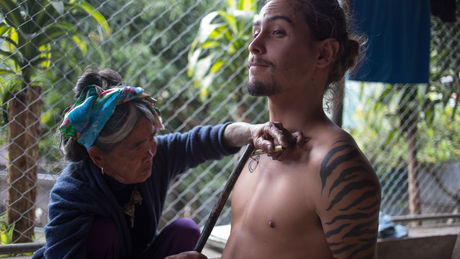
abstract.
Abstract: The town of Buscalon, Tinglayan, Kalinga, Philippines, is home to Apo Whang-Od, a world-renowned tattoo artist. She utilizes the method in her tattoo artistry, called Batok. Batok tattooing is now known as an art expression, but it began with a different purpose. This website discuss the history of Batok, the technique of this method, the designs of these tattoos, Whang-Od and her contribution to this artistry, as well as the cultural significance of this method of tattooing in the Philippines.
history / design
history
design
Batok is a method of tattooing that is considered traditional in the Philippines, specifically with the Kalinga people. Both men and women, of almost all ethnic groups in the Philippines, were adorned with tattoos during the pre-colonial time. Batok was traditionally done on warrior men who defeated their opponent in a battle to the death (Ocampo, 2019). They would mark their bodies after a kill, and these markings became a sign of bravery. For Kalinga women, the meaning was different. A batok tattoo on a woman meant beauty and strength. Some would adorn their daughters with the tattoos, to make them more desirable. Over time, each ethnic group in the Philipllines had their own name and designs for their tattoos. The Kalinga people are known for the batok tattoo method. They are so widely popular across the world, because of Apo-Wang-od, who is known as the “last mambabatok” (De Las Penas, 2019). In recent years, she has been teaching other, younger artists, how to practice this method of tattooing, in the hopes of keeping it alive.
The designs are made using soot taken from the bottom of a cooking pan, mixed with water, for the ink. A thorn from a kalamansi plant, secured to the end of bamboo, is used as the needle. The bamboo with the thorn is then tapped into the skin using another piece of wood. Batok are known to be elaborate in design with symmetrical geometric patterns. Whang-od has a book with images of the traditional tattoo designs, along with their meanings. Someone can choose from those tattoos, or that person can let her decide what they will get. This cultural practice and the meaning of batok is deeply rooted in the ancestry of the Kalinga people. That tattoos meanings range from maturity, status, Kalinga pride, to fertility (Krutak, 2013). These tattoos are considered "authentic", as more modern tattoos have moved in to more contemporary practices (Salvador-Amores, 2021).











